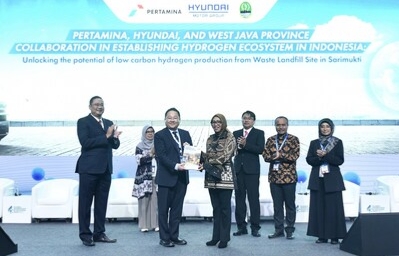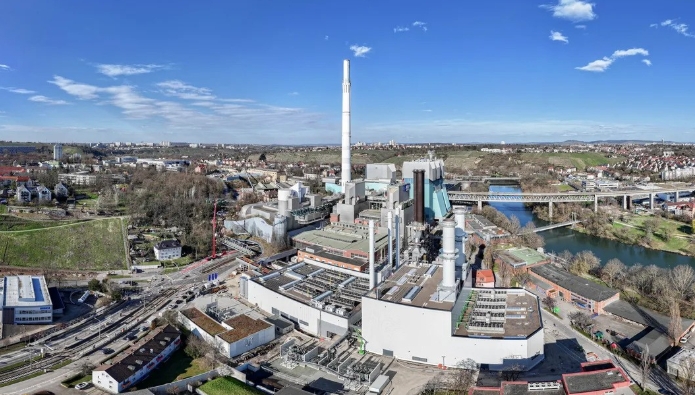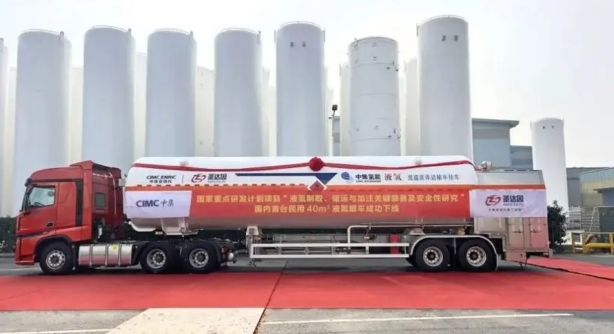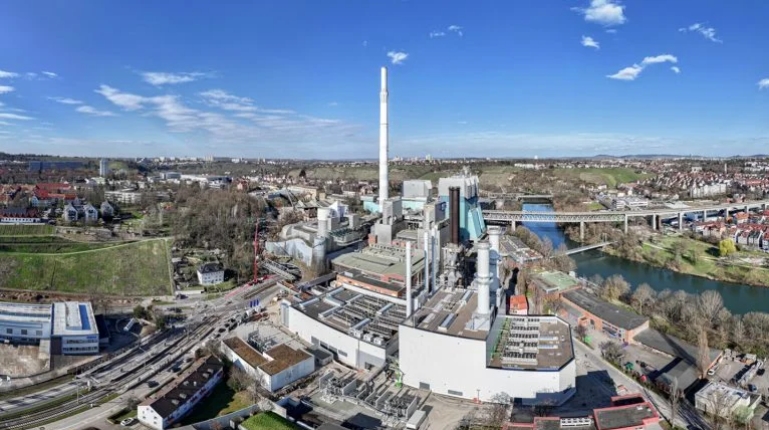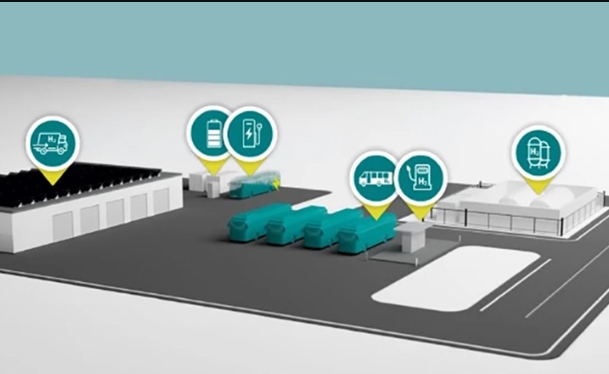‘Green’ hydrogen could be a significant pillar of a decarbonised economy. But there are significant challenges to overcome. Myles Mantle, project development and finance partner at law firm Haynes and Boone, provides the lowdown
On 15th June 2019, at the G20 Ministerial Meeting on Energy Transitions and Global Environment for Sustainable Growth in Japan, the EU, US and Japan announced their trilateral cooperation on hydrogen and fuel cell technologies, that hydrogen and fuel cells are part of a sustainable energy portfolio key to opening up opportunities and value in transportation, industry and other sectors, as well as enabling reliable, clean and affordable electricity.
This announcement coincides with a report from the IEA entitled The Future of Hydrogen, and the announcement that there are now 60 major global corporations signed up to the Hydrogen Council.
This all points towards serious support for hydrogen production and utilisation, and in particular where that production and utilisation is CO2 neutral.
Production and utilisation
Currently the majority of global hydrogen production is from:
natural gas; through steam methane reformation (which releases significant amounts of CO2). This method accounts for around three quarters of global production of approximately 70 million tonnes[1]; and
coal; through gasification (reacting coal with high-temperature steam plus oxygen under pressure, and then reacting the resulting synthesis hydrogen and carbon monoxide gas with steam to separate the hydrogen).
Both techniques result in ‘grey’ hydrogen (i.e. hydrogen production resulting in excess CO2 or CO as well as other pollutants).
Given the desire to produce CO2 neutral H2 various initiatives (e.g. the Carbonnet project in Australia[2] or the H-Vision project in Rotterdam[3]) are looking at sequestering the produced CO2 or CO using carbon capture storage (CCS) techniques, the resulting production being labelled ‘blue’ hydrogen (not grey, but not quite ‘green’ either).
At the same time, water electrolysis (which only requires water and electricity) is being developed as a promising solution for production of ‘green’ hydrogen, on the basis that the electricity comes from renewable sources. Currently only 0.1%[4] of global hydrogen production is from electrolysis and a small proportion of that utilises renewable energy, but this is expected to rise dramatically with new technology, cost reduction and the presence of so many major industrial participants.
Currently most electrolysis is through alkaline (ALK) electrolysers. A newer technology that may deliver faster dynamic response times, larger operational ranges, higher efficiencies with very high gas purities is proton exchange membrane (PEM) electrolysers. The main drawback to PEM so far is the high cost of use, although this is rapidly falling, and projections by IRENA are that the cost will be equivalent to ALK or lower within the next six years.
Other technologies for extracting ‘green’ hydrogen, including biomass gasification, biomass derived liquid reforming, thermochemical water splitting, photoelectrochemical water splitting and photobiological processes look very promising but are largely in the research stage and are outside the scope of this article. Also being researched for potential production is naturally occurring hydrogen at various locations around the world.
Currently the produced hydrogen is utilised by industrial customers (in particular for oil refining and production of ammonia, methanol and steel), in fuel cells for transport applications and there are various demonstration projects and plans for use in commercial buildings and multi-family units and for power generation.
One particularly interesting proposal is to inject hydrogen into existing natural gas networks, and studies show hydrogen can comprise up to 20% of the mixture without the need to upgrade networks (e.g. the HyDeploy project in the UK[5] and pilot projects in the Netherlands and France). For power generation, work is being carried out on how development of gas turbines for use with hydrogen as the fuel. H2 derived from renewables is being considered as part of the concept of ‘power to gas’, where excess renewable power production is used to drive electrolysis for hydrogen production, which can be stored as a fuel for use in all sorts of other applications, including further power production when the renewable energy sources can no longer produce (e.g. overnight or in windless conditions).
Challenges and risks analysis in development of H2 value chain
While the production and use of hydrogen looks very compelling. To create an entire infrastructure, and even economy, gives rise to many challenges, for example:
H2 contains less energy per unit volume than all other fuels and has smaller molecules, and it has little understood corrosive properties in some situations, so storing, transporting and delivering it to end users can require new expensive equipment and technology.
Building filling stations for fuel cells, a new pipeline network capable of handling hydrogen and new storage and transportation facilities will involve extremely high capital costs. However, because a wide variety of processes and resources can produce hydrogen, regional or even local hydrogen production can maximise use of local resources and minimise distribution challenges, although a cost analysis would need to be carried out to determine whether or not local or regional production makes better sense.
Transitioning demonstration projects into commercial reality give rise to high technology risks, which need to be addressed. Government grants or multilateral support plays a role, but the risks often need to be carried by the developers themselves.
At each stage of the value chain, from production, to transport, to distribution to end user, there must be a source of future revenue to justify making the relevant capital expense. This is ‘project on project’ risk, where the first project only works if the second project is actually built and up and running.
To succeed in developing the entire value chain, developers will need to align the renewable energy production, the alkalyser H2 production plant, the distribution network, storage facilities, transportation infrastructure, industrial customers, power customers and transport customers (all fundamentally different industries). The developer will then need to address technical and operational interface issues between the various components of the value chain. Risks associated with each part of the entire chain will need to be fully understood by each relevant party and then those risk should be allocated appropriately between the various stakeholders: the host government, the developers, the suppliers, contractors, any lenders, customers and suppliers. This will also need tremendous political support, especially where governments are being asked to share some of the risks.
Mitigating these risks would include synchronising completion, testing, commissioning and acceptance of the alkalyser plant with the renewable power generation facilities as well as the gas transportation and storage infrastructure, industry utilisation and/or fuelling station infrastructure and any H2 power facility. This is in order to minimise any potential delay or even penalties that might arise through e.g. contracting to supply hydrogen by a particular date and failing, or not be able to take power from the renewable source.
Current proposals for selling produced H2 through electrolysers using renewable energy to existing industrial customers, (e.g. for the production of mineral fertiliser, steel, methanol or ammonia) where this creates demand for hydrogen production, seem like a sensible way of keeping it simple and avoiding for now the need to align the different components. In this way the technology for the production of H2 can be finessed incrementally, with the development or upgrade of distribution networks, transportation and more widespread utilisation coming later.
Regulatory development
At the same time as considering the technical, legal, financial and political challenges, stakeholders will also need to develop the underlying regulatory frameworks in each particular country or region.
Governments and stakeholders will need to work together to develop regulations that are permissive to the production, storage, transport and distribution of H2, the use of hydrogen as a fuel and in vehicles, use of hydrogen in the electricity grid and gas grid as well as in homes, offices and industrial facilities. This includes permitting the use of H2 as a hazardous material, regulating standards for components along the value chain especially in the consumer context, potentially providing certificates of origin for ‘green’ hydrogen, creating a framework for power to gas systems and standards for home and office use systems.
The development of the H2 economy will be complex, but also tremendously rewarding as the benefits are very clear.

